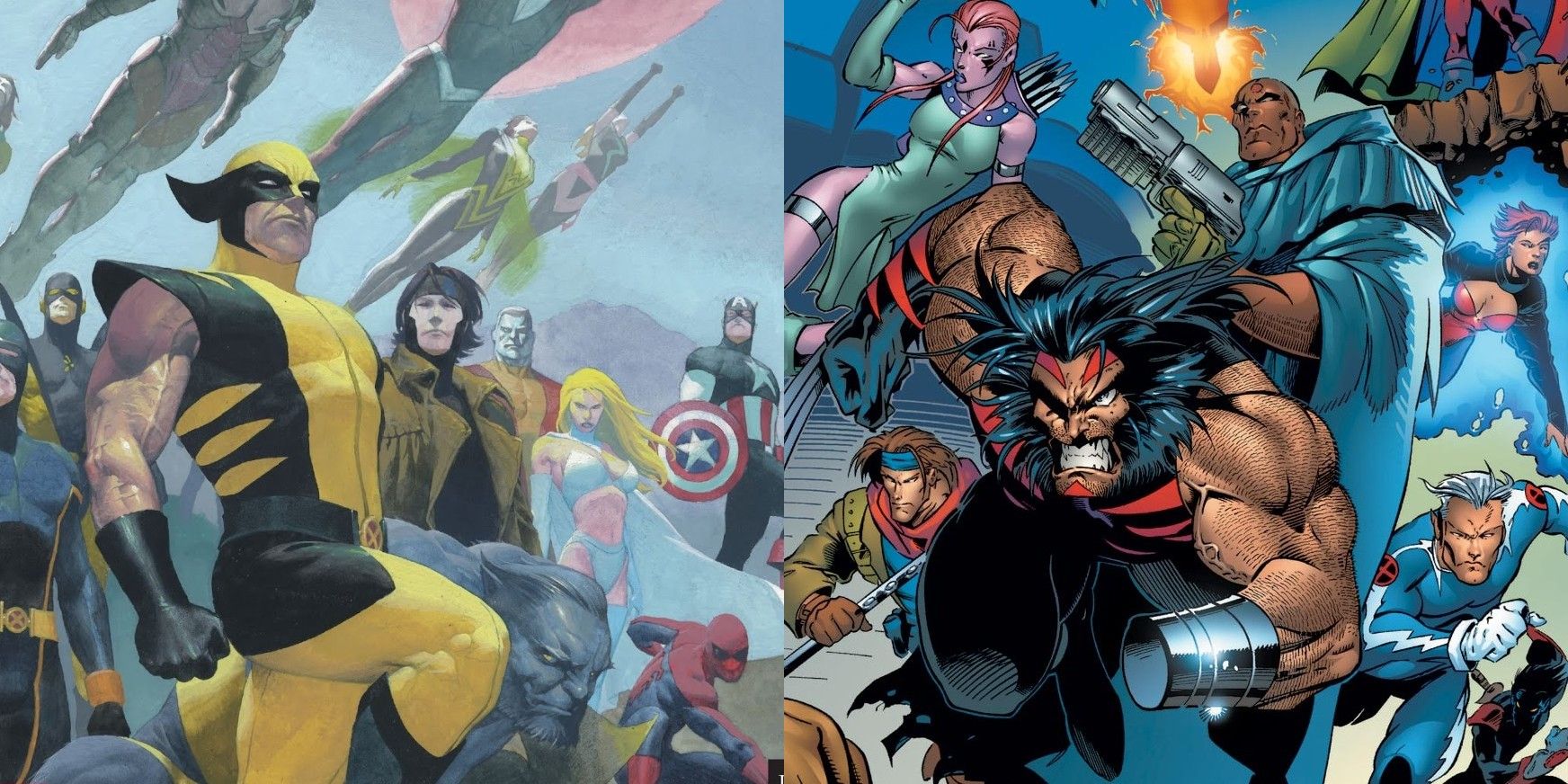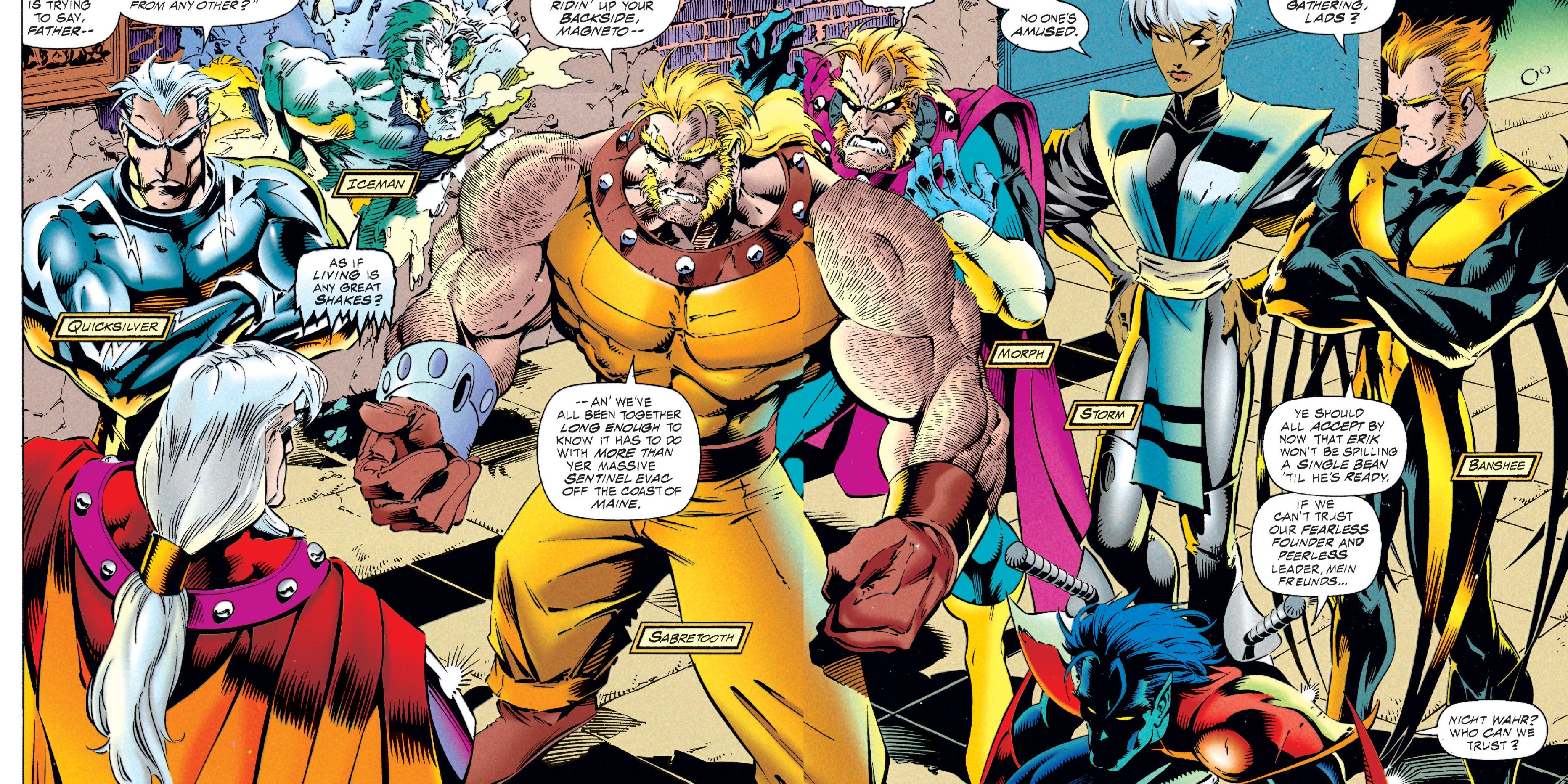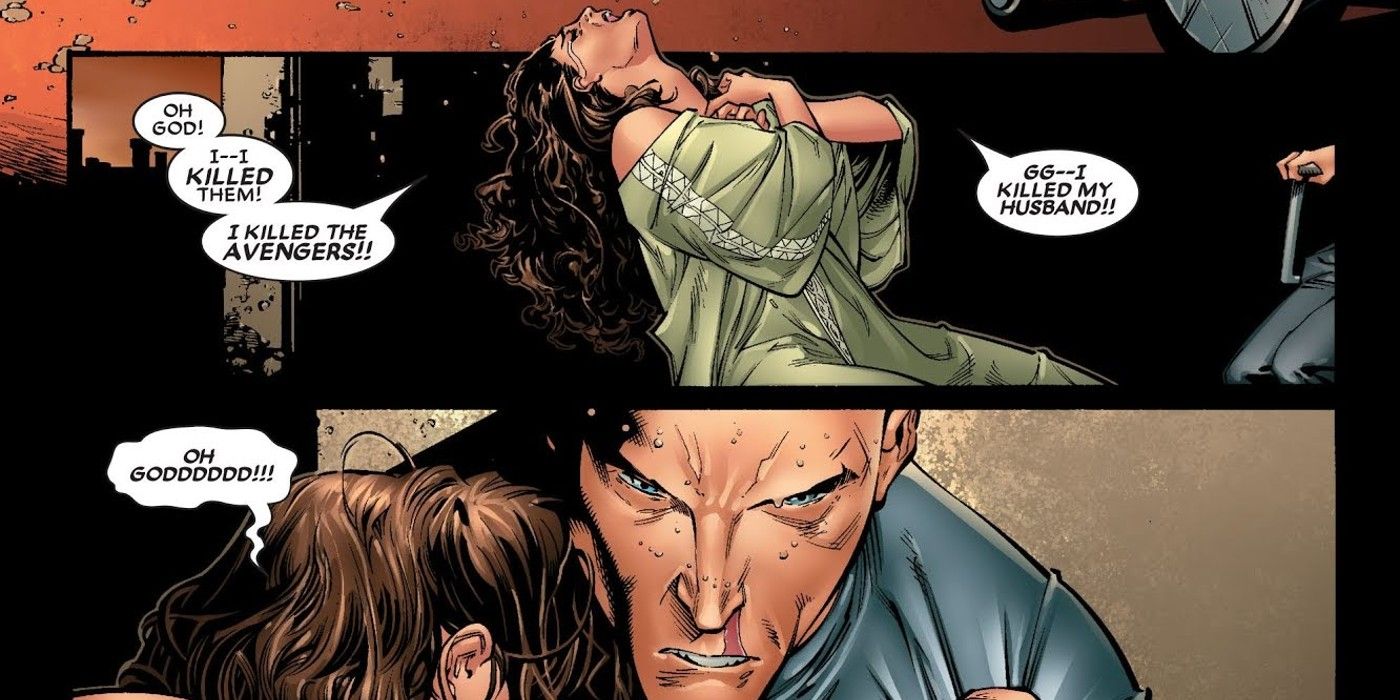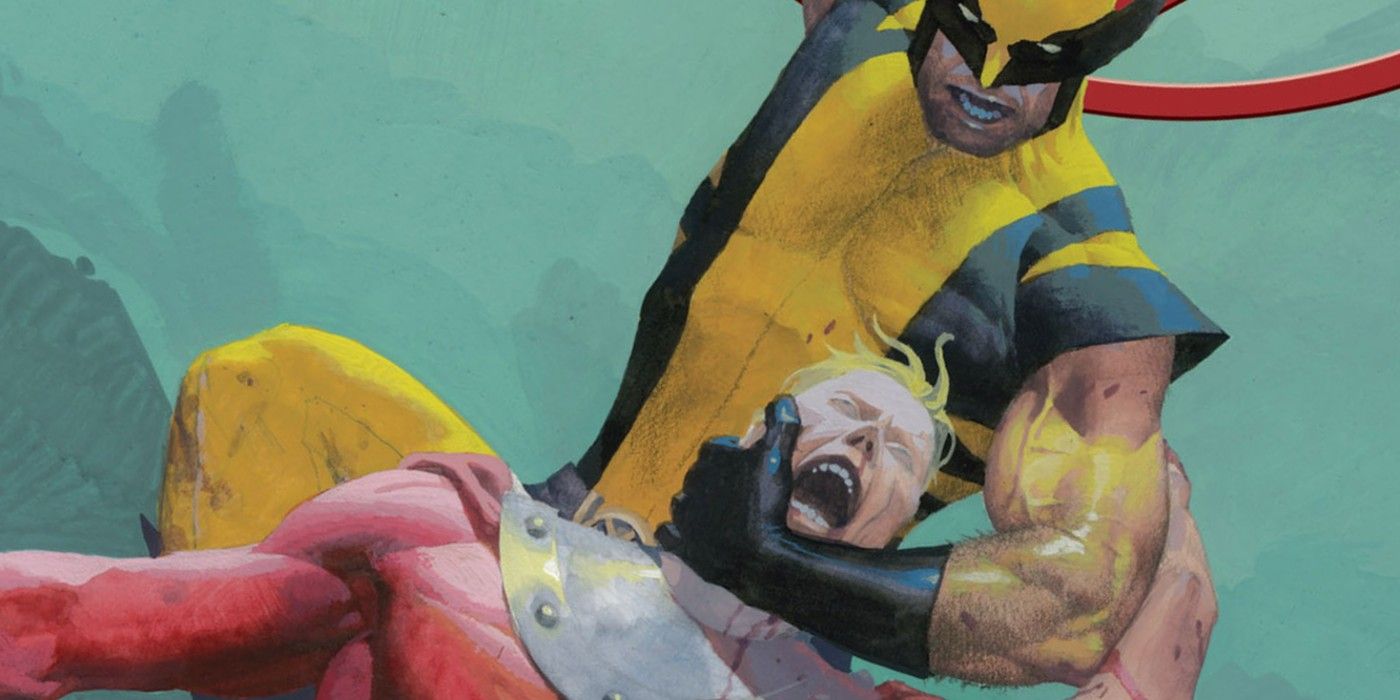There’s nothing that can set the Marvel Comics market ablaze like a true alternativerse crossover, but which famous X-Men melee holds supreme; 1995’s Age of Apocalypse, or the 2005 rollick into the House of M? These two massive odysseys are notable for completely turning their respective timelines upside down, converting the whole Marvel Universe into a completely separate continuity for months at a time. The first was courtesy of the ‘90s X-title stable at the spearhead of such luminaries as Scott Lobdell, Mark Waid and Fabien Nicieza, the second was the brainchild of Marvel phenomenon Brian Michael Bendis. But which one is better?
Both of them have their have their high points and faults, serving as good examples of the respective strengths and weaknesses of the industry during the times they were produced. In other words, there’s a certain demonstration of the zeitgeist to be found in each of them. It’s important to note the relative novelty of such company-wide alternate universe events before AoA, with crossovers mainly focusing on in-universe threats and seldom involving more than a few creative teams (though 1988’s Evolutionary War and Inferno events were earlier examples, and also involved the X-titles.) Likewise, while previous storylines may have encountered a dystopian future or two, both AoA and HoM are notable for their total re-imagination of Marvel history, and innovative visions of a world of superheroes, particularly the roles of Marvel’s mutants in that reality.
Age of Apocalypse
To understand the impact of AoA, it’s important to understand the context of how it came out. The Age of Apocalypse was released at the tail-end of Marvel’s heyday, when the publisher was still riding high from the comics boom of the early ‘90s. After a series of hit-or-miss crossover events, including the short-but-sweet 1993 Fatal Attractions and the lukewarmly received 1995 Phalanx Covenant storylines, Marvel's creatives decided a full makeover just might be the next big hit. So they set their X-titles talent pool, at the time arguably the best collection of comic talent in the business, to work completely redesigning the world of Marvel as an apocalyptic dark fantasy.
The Age of Apocalypse told the story of a world in which the blue-skinned Darwinist Apocalypse succeeded in completely conquering North America following the premature death of Charles Xavier, resulting in a drastically different world in which Magneto served as the surprisingly stalwart leader of a new and different band of X-Men. Featuring the uniquely stylized art of Joe Madureira, Ian Churchill and brothers Andy and Adam Kubert, the story arc is notable for its nearly unrecognizable renditions of several mainstay X-characters, including a villainous Cyclops, a straight-hero version of Quicksilver and a terrifyingly dark Beast. Thanks to top-notch effort by the artists designing the characters, the impact of AoA can periodically be seen in the reintroduction of elements of characters in the crossover to their counterparts in the main continuity.
There are a number of incredibly poignant aspects of the overall story that make it so enduring, including the dynamic resurrection of various characters who end up taking relatable star turns, such as Blink and Morph. Perhaps the best part of Age of Apocalypse was the way the smaller stories ended up delivering devastatingly shocking moments for fan favorite characters, including the beloved Colossus’ abandonment of all of his students in Generation Next to die in Sugar Man’s work camp at the hands of his experiments, sacrificing all their lives for his sister Illyana’s. It’s best remembered as a series of smaller stories that end up adding up to more than the sum of their parts.
House of M
The context of House of M’s release is quite different from AoA, in that HoM concerns the story of one-time Marvel writing-magnate Brian Michael Bendis. In 2005, Bendis was at the very height of his influence at the publishing company, having written its best sellers Ultimate Spider-Man and New Avengers among others. Marvel was having serious creative issues arising from its extensive continuity on multiple fronts, and Bendis was called in to solve this.
One issue began when resident New X-Men writer Grant Morrison concluded his controversial run on the title by killing off Magneto in the midst of a power-mad frenzy. Wishing to rehabilitate the character, Marvel editorial retconned this Magneto to be an imposter. This led to a multitude of continuity problems which to this day have not been explained satisfactorily in-canon.
The second issue arose from Brian Michael Bendis’ own run on Avengers, which concluded with the original Avengers organization being totally destroyed in the crossover story-arc Avengers: Dissembled. The story was notable for introducing a traumatized Wanda Maximoff, the Scarlet Witch as the ultimate villain, bringing to a head decades of subplots implying her mental instability. In a strange coalescence of story elements, Dissembled ends with Magneto revealing himself to be alive following New X-Men, and taking charge of caring for his then-canon daughter, Wanda.
In summary, House of M is a vision of a cosmopolitan superhero utopia, drawn with photo-realistic smoothness by Oliver Copiel in what is surely one of the finest jobs of any modern superhero comic. This new world is brought about when Scarlet Witch uses her reality warping powers to create a world where everyone is “happy.” In the main limited series (complemented by a full range of tie-in books), Wolverine awakens as the sole hero who remembers the real world and, with the help of a new character named Layla Miller, gathers the other heroes together to take down Magneto, who rules as king in a mutant paradise. Ultimately, the plot is uncovered to be the work of Wanda’s brother Quicksilver, who convinced Wanda to remake reality in order to save her from possible euthanasia at the hands of Charles Xavier and Earth’s heroes. The story ends with Wanda resetting reality while de-powering the majority of Earth’s mutants. This can be seen as her attempt to mitigate the damage done by super-powered beings such as herself.
The majority of the HoM titles do not deal with this final battle, instead following the disparate stories of Earth’s heroes and their radically different lives under Magneto’s utopia. One particular stand-out story would be House of M: Spider-Man by Mark Waid, Tom Peyer and Salvador Larroca, which followed an unlikeable Peter Parker who poses as a mutant to avoid anti-human discrimination. The storyline is best described as a powerful single narrative with a lot of interesting corollary parts.
The Verdict
There’s a lot to say about each in terms of merit: House of M’s cinematic narrative style is a sleeker look, but AoA ultimately has more heart, as the end sees the remaining heroes in an impossible battle against Apocalypse they have no hope of surviving (until they did in the sequel miniseries.) Strangely, both alterniverses share the similarity of Charles Xavier not existing, in some ways presenting mirrors to each other. The ‘90s comic style was often off-kilter and sensationalistic, but the ‘00s style, especially under Bendis, seemed to lack the smaller moments that allowed the characters some breathing room.
In the final analysis, it is a tall order to juggle the number of characters needed for a big company crossover like AoA and HoM, to say nothing of the knowledge of continuity required to do the alterniverse justice. Bendis may have had a good concept, but there’s a criticism that his characters sometimes don’t feel like themselves, especially his leading man Wolverine. Ultimately, the Age of Apocalypse team wins out over House of M as the stronger X-Men crossover event, thanks to the editorial team’s superior knowledge of the characters.





